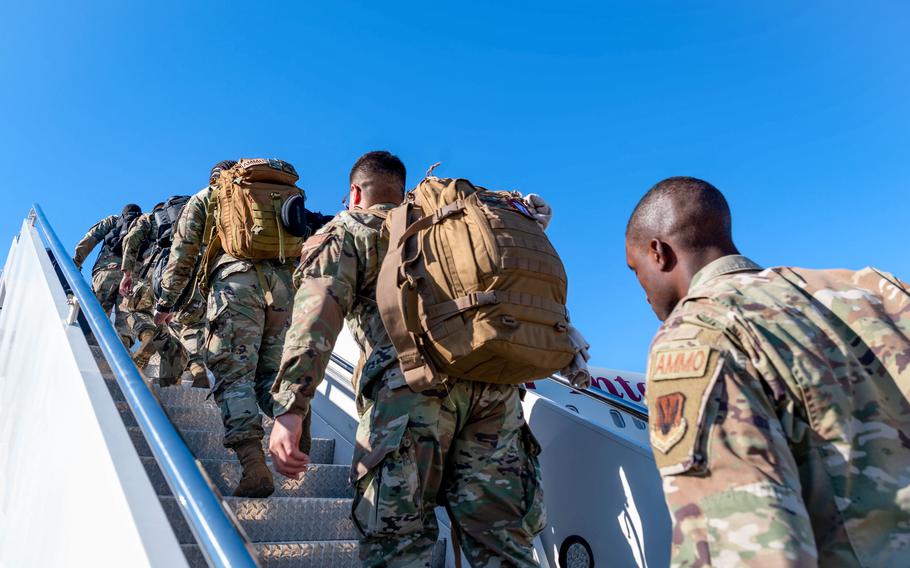Air Force
Air Force introducing new cycle to lengthen recovery time between deployments
Stars and Stripes June 28, 2023

Airmen board an aircraft at Shaw Air Force Base, S.C., Oct. 15, 2022. The Air Force is rolling out a new cycle for the service that will move away from individual deployments in favor of team deployments. (Steven Cardo/U.S. Air Force)
The Air Force is moving away from individual deployments in favor of sending teams on long-term temporary assignments, while providing those units more time at home after they’re finished.
The latest changes to the deployment tempo under the new Force Generation model will be in place by October, the service said in a statement Tuesday.
Under the current decades-old model, most airmen spent six months on a deployment, followed by at least 12 months back at their permanent duty station. The new system normally will provide units with at least 18 months between six-month deployments.
The new model is a departure from past deployment practices, when individual or small-element deployments were based on "tempo bands," or groupings, determined by job specialties.
“We have been able to get away with taking three airmen from this base, five airmen from this base, and two airmen from that base, deploying them and expecting them to come together on day one and be a team,” Lt. Gen. James Slife, Air Force deputy chief of staff for operations, said at the Air Warfare Symposium on March 8. “We don’t actually think that’s the way the future operating environment is going to permit us to operate.”
Service leaders have attempted to move from deploying individual or small teams for years by releasing incremental changes to the force deployment model in 2008 and 2013.
For more than two decades, airmen were deployed in fragmented groups from different bases across the Air Force, with their deployment pace largely determined by their career fields.
Instead, they now will be assigned to capabilities-based force elements. These teams will be composed of airmen in different jobs who share a mission focus, such as flying and supporting air crews or opening and expanding air bases in combat zones.
The new model breaks a 24-month rotational cycle into four phases.
During the first phase, units prepare for the deployment and train together. In the second phase, the units prove their readiness to deploy in exercises and certification events.
After the six-month deployment, they return for a six-month reset phase that allows for leave, reintegration with families and recovery.
Force elements will train, deploy and recover as units throughout each phase of the cycle.
The Force Generation model is part of Air Force Chief of Staff Gen. C.Q. Brown’s strategy to make the service less dependent on static bases overseas.
Units will be smaller, more mobile and able to establish airfields quickly to outmaneuver an enemy under the envisioned concept.
Air Force units have been training under the new model for more than a year as part of a soft rollout, with Air Combat Command certifying its first lead wing to deploy under Force Generation in July 2022.